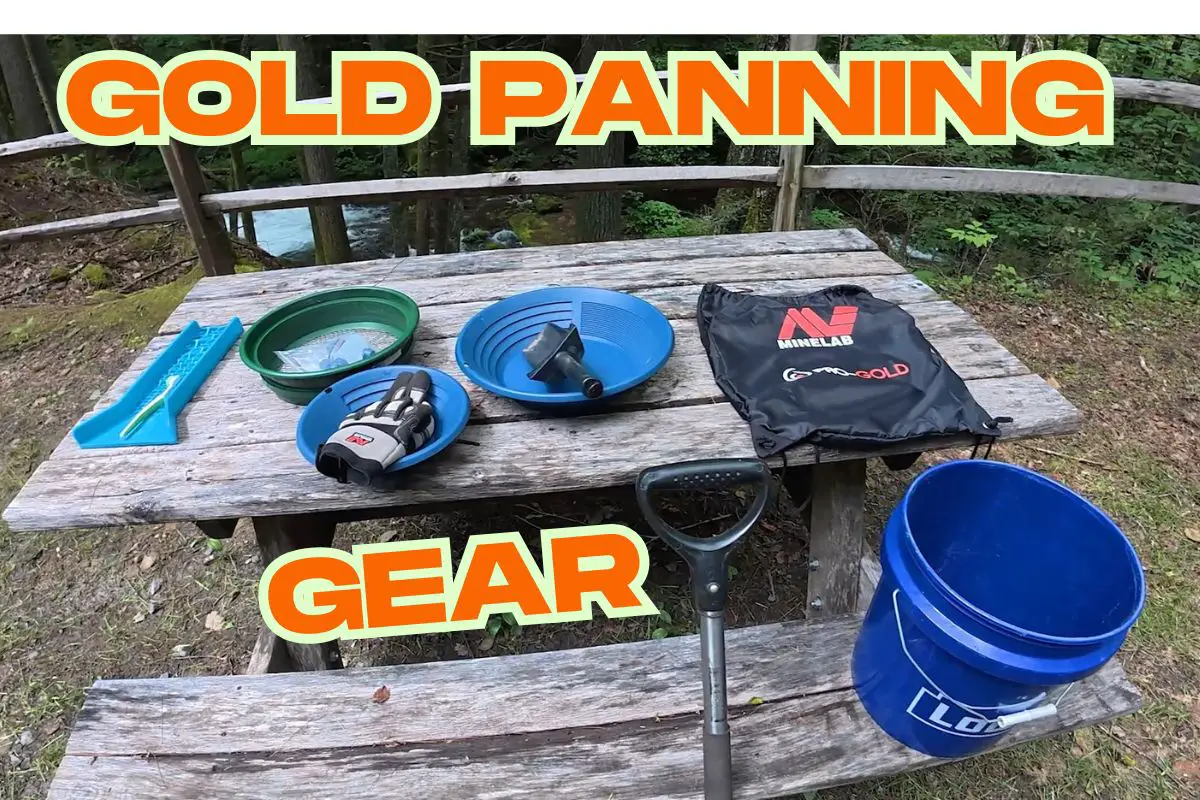From The Mountains of Northern PA
Hey guys! Scott here from the Mental Metal channel on YouTube and here MentalMetalDetecting.com, and today I’m doing something a little different. Gold panning 101. If you are a beginner to gold panning this article has everything you need to get started on a small budget.
Usually, you’ll find me down in North Carolina or in Maryland chasing relics with my metal detector, but not this time. I’m up in Northern Pennsylvania, in the place I grew up—God’s country, as they call it. Specifically, I’m out in Cameron County, soaking up the serenity of a picturesque stream that runs through the woods I used to explore as a kid. And today, I’m excited to share with you something I’ve always had a passion for: gold panning.
Gold Panning on a Budget
This isn’t going to be a video or post about striking it rich. I’m not here to dig up ounces of gold. Honestly, if I can walk away with just a few flakes to say “I found gold in PA,” that’s a win in my book. This is more about the experience, the hunt, and learning something new. So today, I’m walking you through Gold Panning 101, showing you everything you need to get started—even on a tight budget.
You don’t need fancy gear or heavy machinery. Just a few essentials, a good attitude, and maybe a bit of luck.
The Gear You’ll Need
Here’s a breakdown of my setup. It’s simple, affordable, and great for beginners:
1. Shovels and Buckets
You’ll want a decent shovel—nothing too fancy. I picked mine up at Lowe’s. You can even go with smaller hand shovels for tight spots in creek beds. And don’t forget a 5-gallon bucket. That’s essential for holding your material and water.
2. Gold Panning Kit
I’m using the Minelab Pro Gold Panning Kit, which I got from my friends over at Fort Bedford Metal Detectors. They also have a Garrett Gold Panning Kit. The Minelab kit I have comes with:
- Two pans (a large and a small one)
- A classifier
- Snuffer bottles
- Storage vials
- Magnifying glass
- Carrying bag
Pro tip: You’ll want to prep your pans before using them. Out of the box, they have a slick plastic film that causes water to bead up—this isn’t great for separating gold from other material. I recommend using some light sandpaper or dirt and a brush to roughen up the surface slightly. It helps the material move more smoothly when panning.
3. The Classifier
The classifier sits on top of your bucket and helps separate the big rocks from the fine “pay dirt.” You run water over it, shake it around, and toss out the big stuff. What’s left in the pan is your potential gold-bearing concentrate.
4. Gloves
Don’t forget gloves—trust me. I use a pair from Minelab to protect my hands from sharp rocks and rough digging.
5. The Dream Mat
This is my newest piece of gear, and I’m really excited to try it out. It’s called the Dream Mat, and it comes from ProspectorsDream.com. It’s a small, compact sluice mat designed to work in the river using the current to do the work for you. The magic is in the little vortex holes that catch gold as your pay dirt washes through.
What I love about this is that it significantly reduces the time spent panning by hand. Without it, you’re manually swirling and separating for hours. With it, you let the river do most of the work. Just make sure you:
- Clean it first with soap and water to remove the manufacturing film.
- Check for and remove any air bubbles that might block the vortexes.
- Following the instructions that come with the Dream Mat.
It’s made of urethane, so don’t leave it in extreme heat or press anything heavy on it—it could warp.
6. Backpack
All of this gear fits easily into a single backpack. Light, mobile, and practical. The total cost? Around $100 for everything. The panning kit runs about $55, and the Dream Mat was my biggest investment at around $54 with shipping. Check Amazon for the latest price.
A Few Extra Tips
- Bring a toothbrush or small brush to help clean out tight spots and air bubbles in your equipment.
- Watch out for gnats and mosquitoes! I forgot my bug net, and I was nearly eating bugs while filming.
- If you’re panning in Pennsylvania, remember that motorized equipment is illegal. Everything needs to be done by hand, so keep it simple and manual.
Why Try Gold Panning?
So why do I do this?
Because it’s fun. It’s a new challenge. It’s peaceful. You get to connect with nature, slow down, and focus on something that’s both calming and exciting. Whether or not you find gold, it’s about the experience.
And for me, it’s another way to explore the outdoors and keep learning. I’ve picked up a lot of these tips from fellow YouTubers and gold panners who’ve been generous with their advice. I’m still learning too, but I wanted to share what I’ve gathered so far in case you’re curious about giving it a shot.
Ready to Start Gold Panning?
If this sounds like your kind of adventure, I encourage you to give it a try. Check out the gear in the links I’ve provided, or just start with a basic gold pan and see where it takes you. You don’t need a big budget to enjoy this hobby—you just need some curiosity and a willingness to get your hands a little dirty.
Thanks for checking out this post (and the video linked below). I’ll be back soon with more adventures, maybe even some panning in action. Until then—happy hunting, whether it’s for gold or history.
Check Out The Gold Panning 101 Video
Looking For Additional Gold or Metal Detecting Gear?
If you are looking for additional gold panning gear or anything related to metal detecting in general, check out Fort Bedford Metal Detectors. They offer fair and competitive pricing with great service and support. Give them a chance to earn our business but make sure you tell them Scott from Mental Metal Detecting referred you. Give them a call directly at 1-814-215-1732.

Join Me on Patreon
Unlock exclusive behind-the-scenes content, tips, and discoveries from my metal detecting adventures by joining the Mental Metal Detecting Patreon! As a supporter, you’ll get early access to videos, members-only tutorials, and insider updates on my hunts for relics, coins, and treasure. Your support helps keep the channel going and gives you a direct line to shape future content. Come be part of the treasure-hunting community and help uncover history, one signal at a time!

Mental Metal Detecting is a proud participant in the Amazon Services LLC Associates Program, an affiliate advertising program designed to provide a means for sites to earn advertising fees by advertising and linking to Amazon.com. Mental Metal Detecting also participates in affiliate programs with Bluehost, ShareASale, Fiverr, and other sites. Mental Metal Detecting is compensated for referring traffic and business to these companies.

